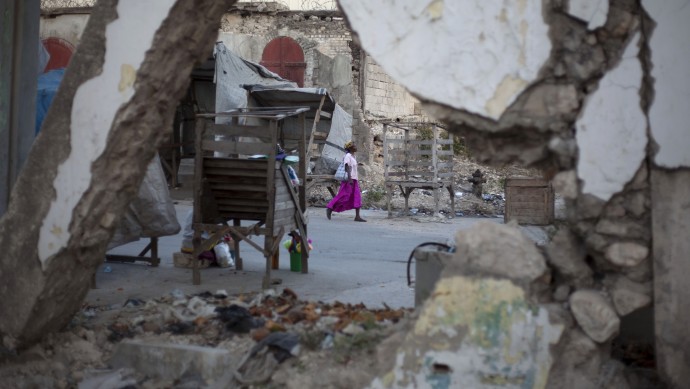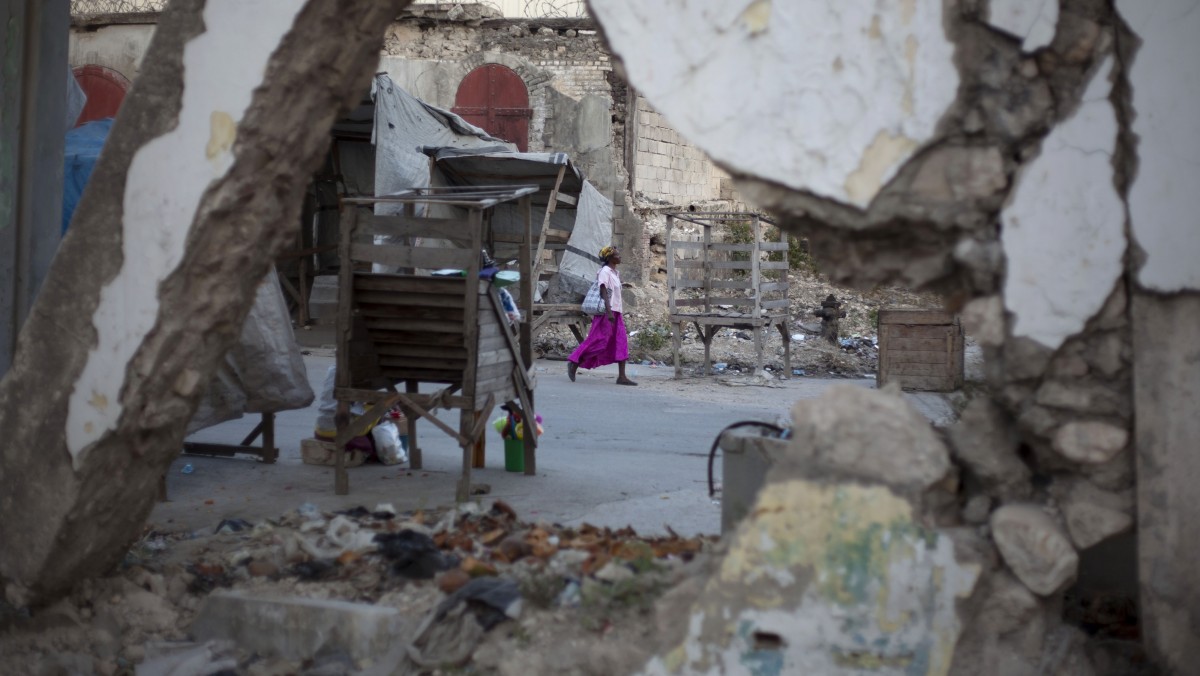
(MintPress) – Three years have passed since the devastating earthquake that killed more than 300,000 people, left 1.5 million homeless and caused the world to collectively take notice of the impoverished Haiti. It sparked a frenzy of donations to the poverty-stricken nation that had long been forgotten, with roughly $12 billion poured in from around the world.
Yet three years on, the nation is arguably suffering more than ever, raising the questions: Where did the funding go?
Temporary settlement camps set up after the earthquake housed 1.5 million people, according to the U.N. International Organization for Migration. While the numbers have dwindled considerably, there are still 680,000 people living in camps near Port-au-Prince, many without access to hand sanitizing stations in the midst of a cholera outbreak.
The cholera epidemic in Haiti has grown aggressively in the last two years, killing more than 7,000 people and afflicting 600,000 of the country’s 10 million. The rise in cholera cases came as the nation was living with the horrific impact of the earthquake, as, even more than before, the access to clean water was scarce.
The problems that have intensified in Haiti represent the antithesis to the hope that emerged following the earthquake. Rebuilding a better Haiti became the motto of the world, prompting individual donations and aid development projects from around the world, most notably in the U.S. and Venezuela. Yet, looking at the nation today, that hope was not discovered. Inefficient use of aid and the failure to build up an efficient government are largely to blame — and the people of Haiti are those who bear the brunt.
USAID Administrator Rajib Shah said in September 2012 that the goal is to provide 30 percent of its funding to the nation directly — to Haiti’s own organizations — rather than international NGOs that were considered more equipped than the government to handle Haiti’s many issues. The mentality behind this is that Haitians will invest in one another, recognizing the failures of outside organizations.
Unfulfilled promises and a band-aid approach
The U.N. special envoy for Haiti released figures that indicate $4.5 billion was pledged to rebuild the country through construction projects. Its top 10 donors included the U.S., Venezuela, the European Commission, Canada, the Inter-American Development Bank, Spain, Brazil, France, the World Bank and the International Monetary Fund. Yet, of all the combined pledges, only 53 percent were fulfilled.
The Guardian reported the U.S. and Venezuela, the two top donors, pledged roughly $1.8 billion, yet both countries failed to deliver on the promise. The U.S. disbursed $223 million and Venezuela delivered $278 million. But that’s only in regards to construction projects aimed at creating new businesses. The recipients of that aid weren’t the Haitian people, with 6 percent of reconstruction funding dedicated specifically to Haiti’s institutions. The rest of them were outside businesses.
Aid directly tied to relief has been a source of scrutiny — only 1 percent of all aid relief donated from around the world went to the Haitian government. The recipients, by and large, were Nongovernmental Organizations (NGOs).
“Almost two-thirds of the rest of the money raised — in the billions — remains in the bank accounts of the aid money managers that were there before the quake: international NGOs the World Bank, the UN, the Inter-American Development Bank and mostly Western building and consultancy firms,” Kathie Klarreich and Linda Polman said in the NGO Republic of Haiti, published in The Nation.
Of the money that was spent, it was largely used inefficiently and in ways that maintained the status quo, which in Haiti includes horrendous living conditions and permanency in what should be temporary relief shelters. Funding was used to create temporary shelter communities to house the more than 1.5 million homeless people. It was a necessary cost, but in terms of moving the nation forward, it wasn’t successful.
Klarreich and Polman also point to funding used to combat the cholera outbreak — another inefficient model of “combating” the problem. The cholera epidemic emerged due to lack of access to clean drinking water, inflicting more than 600,000 people in two years.
To tackle the issue, the United Nations requested aid from around the world, to the tune of $175 million. It received half of the funding, which was then dispersed to NGOs (UNICEF, the British Red Cross and Interim Haitian Reconstruction Commission, to name a few) tasked with doing their jobs. As a result, a campaign of cholera awareness was released in Haiti, centered around precautionary health advice, including frequent hand washing. Yet those same NGOs, including UNICEF, failed to provide adequate access to showers and hand washing stations. Twelve percent of temporary camps set up by NGOs had hand washing stations in 2011 — in the midst of the crisis.
Now, the U.N. is launching yet another $144 million appeal to solve the nation’s cholera crisis, asking nations around the world to chip in. Yet the enthusiasm for helping Haiti is fading — quickly. With no results, it’s a hard sell.
In addition, there was the letdown known as the Interim Haiti Recovery Commission, created after the earthquake with the intent of equipping the Haitian government with the resources it needed to establish itself and rebuild the country into a better island.
A New York Times editorial published last year indicated that, at that time, the commission’s Web site included the following statement: “Please kindly note that the mandate of the I.H.R.C. expired on October 21, 2011. Pending a decision of the Haitian Parliament regarding the future of the institution, a team is currently dealing with day-to-day business. The (re)submission of project proposals remains closed until further notice.”
That very website doesn’t even exist today, representing the breakdown of an agreement once viewed as an avenue for real change.
Charities, anyone?
Fifteen days after the earthquake, $528 in donations were made to the top 40 U.S. nonprofit organizations, according to the Chronicle.
Those donations have tapered off. Largely due to the lack of startling headlines, Americans were also subject to news regarding possible corruption within the very organizations they donated to — Wyclef Jean’s Yele perhaps the most recognizable.
Jean created Yele as a way to give back to his home country. A native of Haiti, Jean was vocal in his love for the people and the hope of a better tomorrow. In 2010, he ran for president in the nation, but was disqualified because he was residing in the U.S. at the time.
During his organization’s run, it raised more than $16 million. Yet audits by the New York attorney general’s office showed that $9 million of that went to salaries, office expenses and travel. In October, the charity shut down altogether. It was prompted with the resignation of chief executive, Derek Johnson.
And while a lack of trust could be considered rationale, the issue that still remains is the dire living conditions of Haitians. A report issued by Amnesty International indicates makeshift camp conditions are worsening, contributing, in part, to increased vulnerability among women and girls to rape and sexual assault.
“As if being exposed to insecurity, diseases and hurricanes were not enough, many people are living in makeshift camps are also living under the constant fear of being forcibly evicted,” Amnesty International Special Adviser Javier Zuniga said.
While the world lacks trust in the system of providing help to those very people, their living situations are worsening. The problem is not going away. The options now are either to accept the defeat and walk away — or change.


